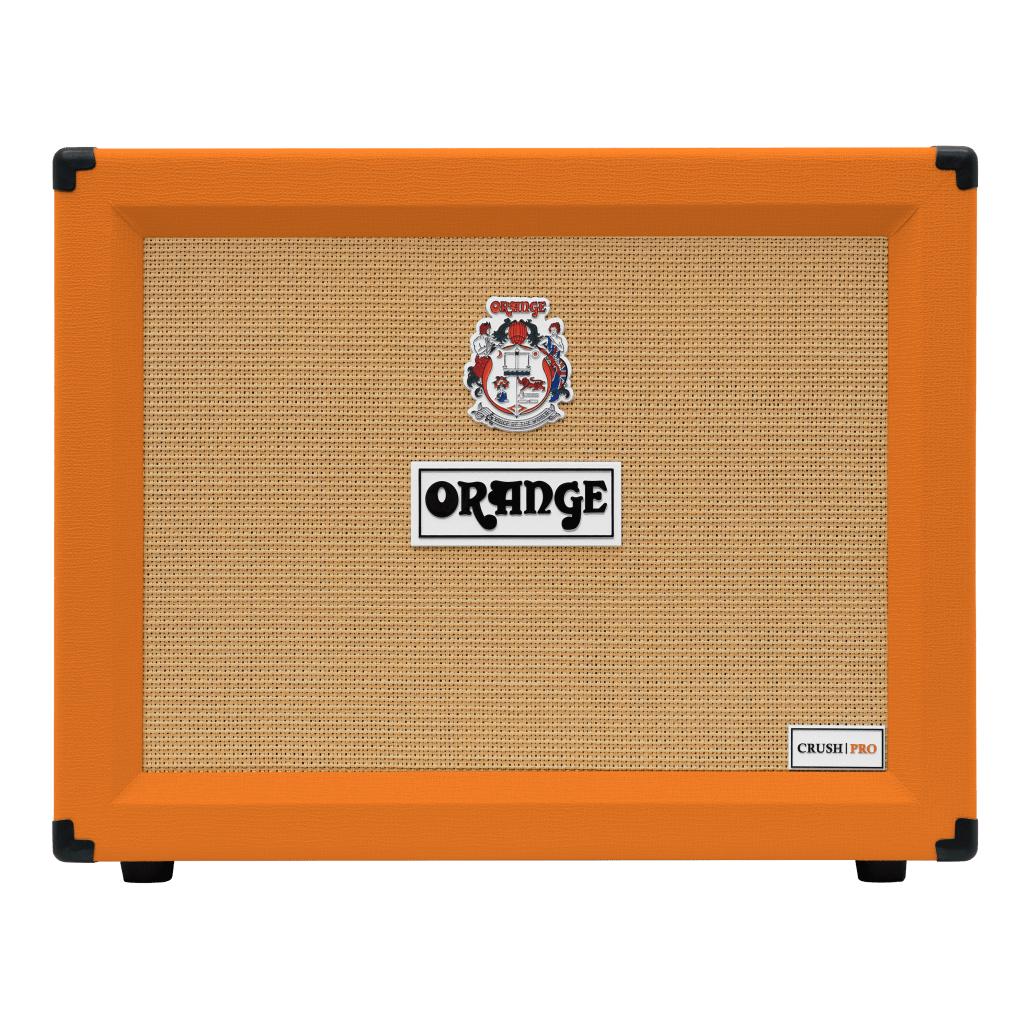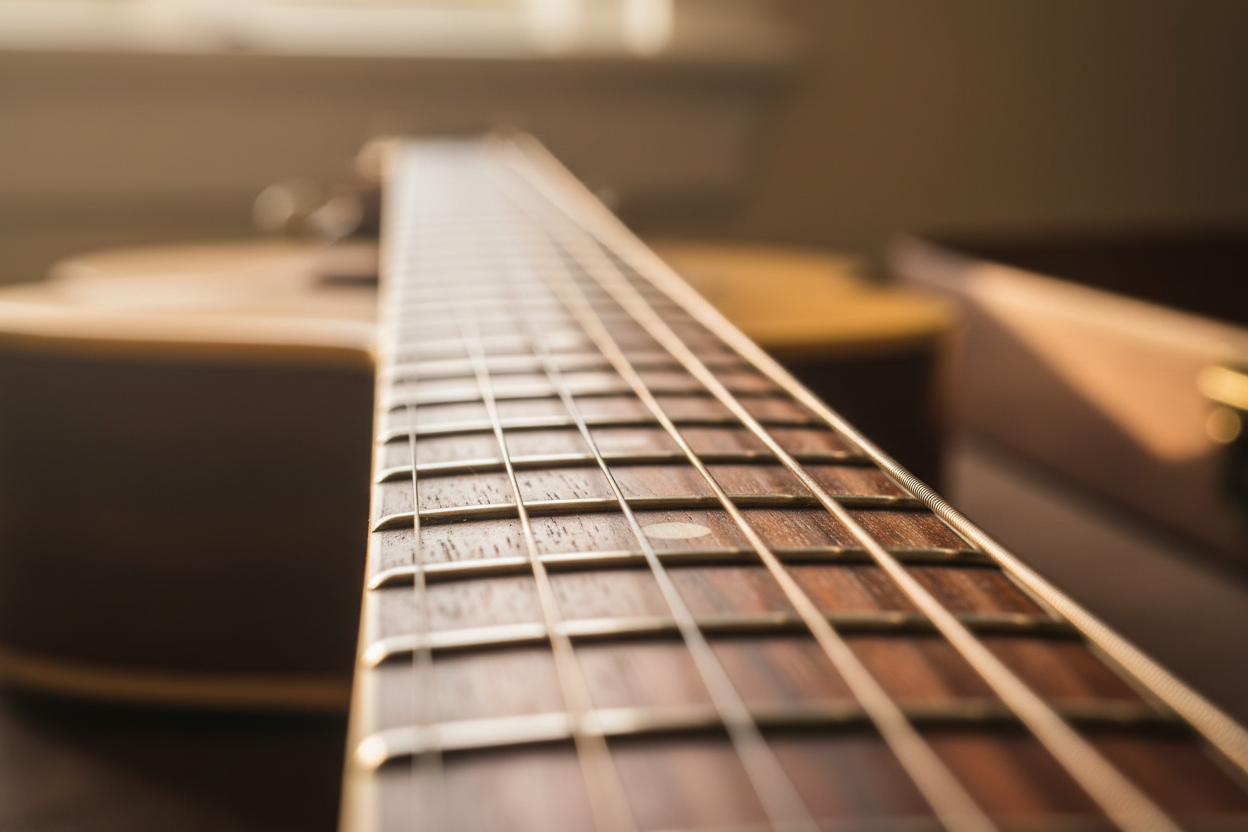Guitar amps have changed the way guitar-driven music is being made, played, and enjoyed. These devices come in all shapes and sizes - from pocket-sized companions for parties to versatile workhorses equipped with hundreds of tones and effects to hulking powerhouses capable of emitting robust noise across many miles.
The trick to choosing a guitar amp that is right for you is to understand your options. The current market is filled with an array of different models across various price points, so it would pay off to be picky.
The amp you’ll buy will greatly shape your guitar tone, and we’re here to help you make an educated choice. Even though you can always tailor your sound with pedal effects (and eventually using different guitars), a good amp is irreplaceable, so let’s help you find it.
Guitar Amp Types
Guitar amplifiers can be broken down into four principal categories - tube (valve) amps, solid-state amps, modeling amplifiers, and hybrids.
The global guitar community is quite polarized when it comes to which guitar amp type is the “best”. In truth, audio perception is subjective, and so are music style preferences and needs. That’s why we think it’s important to understand how each of these types works, what are their benefits, and where they fall short of magical.
Tube/Valve Amps
The “oldest” of the four guitar amplifier types, the tube amp, is actually a product of modern engineering, replacing obscure portable PA systems and improvised amplifier packages. It’s named after the components that power the device; Europeans call them “valves” while American guitarists refer to them as “tubes”, although both terms are technically correct.
The vacuum tubes supplying power to these amps need a bit of time to warm up, which most professionals don’t mind since the tone derived from tube amplifiers is big, distinctly warm, and unattainable on other amplifier types.
The warm sonic signature of tube amps makes them prone to subtle natural distortion. Since a bit of gain is always present, cranking the gain knob can give you a robust overdrive and eliminate the need for guitar effects. This fully analog approach to tone shaping is one of the main reasons why tube amps have continued to remain popular almost a century after they were invented.
On the downside, the tubes in tube amps are particularly fragile. It’s not uncommon for builders of tube amplifiers to make protective covers of aluminum or metal to ensure they’re physically shielded from accidental bumps.
Unfortunately, breakage is not as big of an issue as not playing the amp can be. Namely, tubes must be cranked and used regularly, or their overall lifespan will suffer.
The last and possibly largest drawback of tube amps is that they typically weigh considerably more than other guitar amplifier types. For instance, a small 20-watt Laney Lionheart weighs a whopping 74 pounds, which is almost twice as much compared to its 120-watt solid-state counterpart, the Laney LX120RT.
Solid State Amps
The way tube amps colored the guitar’s tone didn’t sit well with all guitarists. Namely, as jazz, blues, and other (now iconic) music genres came into their own, the need for a squeaky-clean tone became more apparent. Moreover, bands began touring more often throughout the ‘50s, and ‘60s, which again meant that a lighter, wieldier type of amplifier was needed.
Solid-state amps came merely years after Walter Brattain and John Bardeen made the first commercial-grade transistor, replacing large, heavy, and fragile tubes with pocket-sized chips.
Lighter and more sonically accurate, these amps excelled where tube amps failed. Additionally, they don’t have a wind-up time nor will their transistors die if the amp is unused for months or even years.
Though they do provide a cleaner tone, the sound of solid-state amps isn’t without its flaws. Compared to tube amps, the tone of SS amps may appear as brittle and somewhat weaker when two models with identical wattage and similar settings standing side by side.
Modeling Amps
Still considered among the latest letters in guitar amp technology, modeling amps were invented over three decades ago with a simple purpose - to allow musicians to emulate sounds from multiple different amps on a single amplifier.
Modeling amps are not to be confused with off-brand knockoffs of contemporary guitar amplifiers. They’re unique amps that vividly replicate the sound of amps they are “modeled” after, and when it comes to newer models like Line 6 Catalyst 100 or Boss Katana 100 MK II, most people can’t tell the difference between the real thing and a modeled sound.
So, what’s the purpose of a modeling amp if you can already buy the original amp? The answer is quite simple - instead of hoarding dozens or even hundreds of standalone amplifiers, you get access to their distinctive tones in one box. Not only is this more convenient, but it’s also incomparably more cost-effective.
Moreover, modeling amps usually feature sound modules based on bulky, heavy tube amps, many of which are no longer being produced. Not only can you now have a sound as if you had some of these amps with a modeling guitar amplifier, but you won’t have to break your back carrying 100+ pounds doing so.
While modeling amps offer these significant benefits, it's important to acknowledge some nuances in their performance. Certain models may produce sounds that can come across as harsh or thin and might not deliver the same presence in a mix as traditional tube amps. This is a crucial consideration for musicians who prioritize the depth and warmth of sound, particularly in live performance settings.
This aspect doesn't overshadow the overall utility of modeling amps but is an important factor for buyers to consider. It highlights the ongoing evolution of modeling amp technology, striving to more accurately capture the essence of the amps they emulate.
Hybrid Amps - Combining Solid-State Power with Tube Warmth
Hybrid guitar amplifiers, particularly those marrying a solid-state power amp with a tube preamp, represent a unique crossroad in amplifier technology. This blend aims to capture the best of both worlds: the warmth and tonal richness of tubes and the reliability and efficiency of solid-state circuits.
In a hybrid amp, the tube preamp is responsible for the initial amplification of the guitar's signal and largely shapes the amp's tonal character. Tubes are renowned for their ability to produce a warm, natural, and dynamically responsive sound. This stage is where much of the amp's character and overdrive tones are generated.
Following the preamp section, the solid-state power amp takes over. Solid-state technology is known for its durability, consistency, and lighter weight compared to tube power amps. It efficiently amplifies the signal to drive the speakers while maintaining the tonal qualities shaped by the tube preamp.
One of the main advantages of this hybrid approach is achieving the desirable tube tone without the common drawbacks of full tube amps, such as high maintenance, fragility, and heavier weight. Hybrid amps are generally more reliable and easier to transport, making them a great choice for gigging musicians who need both quality sound and practicality.
Furthermore, hybrid amps can be more affordable than their all-tube counterparts. They provide an excellent entry point for guitarists looking to step up from a basic solid-state amp to experience the tube sound without a hefty investment.
Considerations and Future Outlook
While hybrid amps offer a compelling mix of tube tone and solid-state reliability, it's important for buyers to understand that the experience is not identical to playing through a full tube amp. The power amp section, being solid-state, may not deliver the same level of warmth and natural compression as an all-tube design.
However, the technology behind hybrid amps continues to evolve. Manufacturers are constantly refining designs to enhance the tube-like qualities of these amps while retaining the benefits of solid-state components.
Guitar Amp Buying Guide - Things To Consider
Understanding guitar amp types is the first step, but now we should dive into the nitty-bitty details that form the specs of each model. We’re talking about control knobs, wattage, dimensions, effects, and quality of sound.
Each of these aspects should be considered individually when choosing a guitar amp, so let’s break them down.
Audio Quality
The quality of sound an amp produces is largely derived from its hardware. In the case of tube amps, the quality of tubes plays a big part in how much time they need to warm up, and how consistent their warm tone will be. When it comes to solid-state amps, the circuitry defines pretty much all aspects of the amp’s performance.
As far as modeling amps are concerned, both hardware and the module on which specific tones are based form up the amp’s sound quality. Due to the advent of digital technologies, brands that issue modeling amps featuring modules of their own amps (e.g. Line 6 launched a model amp based on earlier Line 6 amplifiers) are doing a phenomenal job.
The quality of hybrid amps is still being weighed by pros since they’re relatively new in comparison to an all tube amp. They’re mainly favored for their versatile, experimental nature but are outclassed in the field of raw sonic performance by more traditional tube amp types.
Features
Some amps are designed to be well-rounded, featuring multiple channels that allow two players to play at the same time, intricate frequency EQ sliders, an array of effects like pitch-shifter, looper, multiple styles of distortion, and more.
However, sometimes less is more. You won’t see too many features on an average tube amp; they’re one-trick ponies, but they’re best at what they do. Conversely, modeling amps normally come equipped with dozens if not hundreds of features that allow you to fine-tune virtually all aspects of your tone.
Consider the utility of features your chosen amp has to offer. As a rule of thumb, more versatile amps tend to be less beginner-friendly, and vice versa.
Power
Laymen often equate an amp's power directly with its wattage. While there is some truth to this, as higher wattage can enable a stronger sound output, an amp's power is not solely determined by watts alone. Tone consistency and clarity are also crucial factors.
For instance, solid-state amps are reputed for delivering a clear, uncolored tone at moderate volume levels. Yet, when volumes are pushed higher, they may introduce small amounts of gain, potentially leading to unwanted feedback or distortion.
Tube amps, on the other hand, embrace this characteristic. They are designed to produce significant gain right from the start and are capable of handling much stronger overdrives and distortions than solid-state amps, making what might be considered an issue in solid-state amps a desirable feature in tube amps.
You may notice that off-brand amps typically try to compete with more renowned models by offering a lower price and the same wattage. Where your average Fender, Marshall, or Blackstar would be able to easily dish out ultra-strong yet clear distortions at any volume, the tone of off-brand amps with the same alleged “power” would break up halfway there.
Guitar Compatibility
Today, nearly all amps can work with nearly all guitar makes and models. However, there’s a reason why the most famous guitarists in each music genre prefer using certain guitars with certain amps.
For instance, Strats are known as ideal rock guitars and work best with amps best suited for rock like Fender and Marshall amps. If you’re into metal, the chances are you own a Schecter, Ibanez, or a B.C. Rich guitar, in which case you’d have better luck running a Peavey, Orange, or Blackstar amp.
There are some exceptions from this pattern - if you’re into jazz, you’re likely playing a Godin, Gibson, Gretsch, or a high-end Ibanez guitar, but any amp would do as long as it’s a solid “vintage” one. The infamous Fender “Jazzmaster” was practically built for that purpose.
You shouldn’t focus so much on the brand if you’re mainly a session pop guitarist. A decent solid-state amp that is easy to control like Yamaha’s THR10 MK II or Orange’s Super Crush sounds great on virtually any instrument.
Versatility & Price
One of the first questions you should ask yourself before buying a guitar amp is “Will this be my go-to workhorse, or will I expand my amp collection later on?”
Some guitarists need “any” amp fast to join a band with their friends, or to join a music class. If “any” amp could do, you don’t need a versatile amp that can produce a barrage of different noises, shape your tone with hundreds of effects, and come supplied with a metronome, tons of percussion sounds, and an inbuilt tuner.
If, however, you’ve been saving up and want to buy an amp that can serve you in any setting (e.g. gigging, touring, recording, rehearsals) and any music style, you’d probably be most satisfied with a well-rounded amp that fits the aforementioned criteria.
Peavey’s Vipers are great for that, just like virtually any newer Line 6 modeling amps. Even certain solid-state amps with extensive controls like the infamous Marshall Code 50 and Blackstar’s Debut 50R could fit your needs for a versatile amp.
Guitar Amp Testing Tips
Guitar amplifiers are fairly expensive, and we warmly recommend testing a model you want to buy before paying for it. Consult these tips when testing your chosen amp:
- If at all possible, test the amp personally. Music store clerks are there to help if you’re not a guitar player yet, and YouTube demonstrations can give you a good glimpse of how an amp is supposed to sound, but you’ll want an amp that sounds good when you’re playing it.
- Use your guitar when testing the amp. Again, the shop you’re buying the amp from may lend you any guitar for the purpose of testing the chosen amplifier, but each amp sounds differently when played on a guitar different from your own.
- Test its clean, overdriven, and distortion modes if any are available. If not, bring or lend popular guitar effect pedals that can emulate those sounds. A good amp, regardless of its type, will deliver solid results in all fields.
- To test the guitar’s versatility, try playing as many guitar styles and music genres as you can think of. Use both your fingers and a pick; crank out some rock riffs; try soloing a bit. This will also give you a glimpse into the guitar’s current setup (and possibly save you hundreds of dollars on corrections).
Conclusion
A decent amp will get you through a gig, and your bandmates may or may not notice that your tone isn’t tip-top at rehearsals. However, if you have a good guitar amplifier, your guitar will shine in any setting. More importantly, you will be more inspired to compose and play once you get accustomed to a high-quality sound.
We strived to provide extensive descriptions and guidance throughout this article, but should you need more personalized advice, we warmly invite you to visit our store and we'll assist you in finding the right amp for your needs.
Written by Marko Jovanovic




